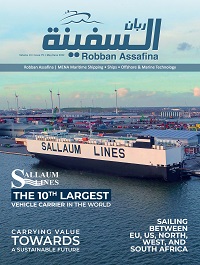Japan Coast Guard tested Fujitsu technology for preventing vessel strikes and improving navigation safety
Fujitsu is about to offer a safe navigation solution using artificial intelligence (AI) to predict vessel collision risks in congested sea routes and coastal areas.
Tests during field trials between November 2020 and September 2021, under contract with the Japan Coast Guard, demonstrated how the AI technology improved maritime safety in areas of heavy traffic with heightened collision risks.
AI makes it possible to alert operators when ships are at a high risk of an accident. It calculates and predicts vessel collision risks based on the current position, speed and direction of the ship, based on Automatic Identification System (AIS) data.
Fujitsu added another algorithm to calculate the degree to which the vessel is following its course, enabling more accurate risk prevention.
Trials with this new algorithm, conducted at the Tokyo Wan vessel traffic service centre, Japan demonstrated how this technology reduces unnecessary alerts by about 90% on all sea routes, especially on curved sections where alerts frequently occurred.
“Our system uses a unique method that combines multiple risk calculation models,” says Fujitsu transportation business division’s Kazuaki Tsunoda. “It enables an accurate quantification of the degree of collision risk based on received AIS data. The model can be tuned according to the users’ requirements and the detected risk level,” he tells Maritime Optimisation & Communications.
Highly accurate predictions enable operators to recognise risks early and respond quickly to prevent vessel collisions.
With conventional technology, excessive alerts have occurred in cases where two vessels were judged to be travelling straight along their current course in the vicinity of curved sections of sea routes.
Fujitsu’s new algorithm categorises collision risks as low when the two vessels follow a specified route in a curvilinear manner.
It reduces unnecessary alerts and makes it more accurate in determining the risks of a collision between vessels, says Mr Tsunoda. It contributes to improving maritime traffic safety and reducing human error.
“As the collision risk is calculated both on the ship’s course and speed, the system can differentiate between collision risk and simple congestion,” he explains.
“Characteristics of different vessel types are included in the collision risk calculation method.”
Fujitsu’s solution continuously provides users with quantitative information on the calculated collision risk. Mr Tsunoda explains some of the methodology behind the technology.
“We digitise the ‘sense of risk’ based on discussions of experts about risk results calculated based on past data,” he says. “We prioritise risks by quantifying the collision risk levels on a scale of 0.00 -1.00 (1.00 being high risk).” Risks are then regularly updated based on the movement of each vessel.
Japan Coast Guard has used Fujitsu’s AI technology in field trials to predict vessel collision risks in Tokyo Bay and to detect other areas where collision risks are highly concentrated.
Fujitsu will continue to enhance the AI algorithms through further development using industry feedback. “We are improving the system through verification with multiple users,” says Mr Tsunoda. “We are currently working to further enhance our technology.”
Source: Rivieramm






